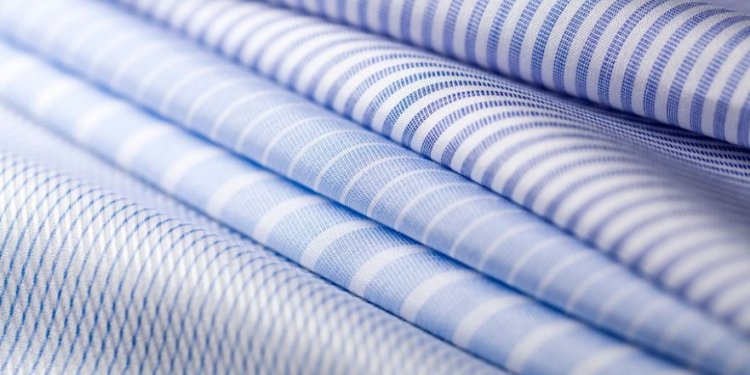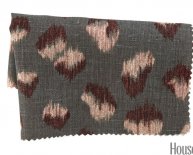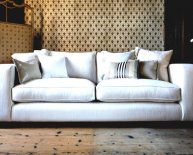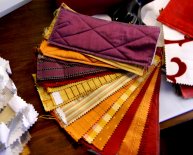
Dobby Material
Introduction
The fiber reinforcement provides the structural performance required of the final part. The fibers or filaments come in many chemical types and forms and are the primary contributor to the stiffness, strength and other properties of the composite. The dominant chemical types of commercially available fibers are: fiberglass, aramid, carbon, polyester and vectran. Other fiber types may be suitable for special applications. The dominant forms that fibers are sold include: Strands (or roving or tow or yarn. Many fibers or filaments stranded together in a bundle, wound in a spool or reel, ) woven fabrics (flattened strands of filaments woven in a variety of weaves to a type of fabric or cloth, ) unidirectional (strands laid side by side and stitched or held together by other means, forming a kind of fabric that bares reinforcement only in the fill direction, ) multiaxials (unidirectional woven fabrics stitched together in a combination of orientations, ) and chopped strand mat (chopped strands held together with some kind of glue or “binder” in the form of a non-woven fabric.) All fibers designated for use in composites undergo chemical treatments and are coated with some kind of “sizing”. Sizing is a chemical that binds the filaments together, reduces abrasion, facilitates impregnation and acts like a coupling agent that enhances compatibility with one or more types of resin.
Selection of reinforcement type greatly influences costs. This is not only because of the quality and cost of the material itself, but also because higher cost material usually requires highly skilled personnel, more sophisticated production facilities and often more labour hours.
Fiberglass
Fiberglass was first discovered in 1893 and was firstly made commercially available in 1936 as insulation material. It became popular in the 1950’s, when some of the health hazards associated with asbestos were becoming apparent. Due to the similarity in shape between the fiberglass and the asbestos fibers, fiberglass was able to effectively replace asbestos in many applications such as electrical, thermal, and acoustic insulation and structural reinforcement. Today it is the dominant reinforcement fiber in composite construction, accounting for over 90% of worldwide consumption. This is simply because it has good strength to weight characteristics, can be processed easily and sells at a low price. Glass filaments are made relatively easily by extruding molten glass. The diameters of the fibers produced range from 5 to 25 microns. Many different types and qualities of glass sell for significantly different cost. The most widespread quality is “E-glass”, “E” from the word Electric implies that it is an electrical insulator. It is low cost product, used mostly in the marine industry. Others are “S-glass” and “S2-glass”, the letter “S” comes from the word Strength implying that it has improved mechanical properties. These types are much more expensive and used mostly in armor applications. “S” is certified as for the production parameters. “AR glass” is resistant to alkali chemical attack. “C” or “T-glass” is resistant to acid and corrosion. “A-glass” is glass with more alkali content similar to window glass, and costs a bit less. Generally, when cost is a major driving force in the selection of a reinforcing material, fiberglass is usually preferred.
More information about
Aramid
Aramid was invented by DuPont in 1960’s (“Kevlar” is the registered trade name of Dupont aramid) as a result of research on nylon (polyamide) fibers. It was firstly introduced in the market in the 1970’s as tire reinforcement and like fiberglass, as an asbestos substitute. The chemical structure of aramid shows the aromatic benzene rings along the polymeric backbone. The word aramid is a contraction of its chemical description–aromatic polyamides. Strength and modulus of aramid are very good, density very low, UV resistance low and compression and shear strength are similar to E glass. Its value comes from excellent toughness and resistance to impact, damage, abrasion and heat (up to 500o C.)
The superior toughness of aramid is an outcome of the energy consuming failure mechanism of its fibers. This energy absorbing failure mechanism makes it ideal for use in armor, military and ballistic applications, like helmets and bullet-proof vests. Among many other very important uses, it is used for firefighting protection, on the underside of airplanes (protection against stone hits during take off and landing) and the under side of race cars. It is used generally in important structures whenever impact, abrasion and/or heat is anticipated. It also blends very well and works together with other fibers, like glass and carbon. Carbon-aramid “hybrid” constructions bare the high strength and stiffness of carbon and the impact protection of aramid. Processing aramid in composite fabrication is somewhat more difficult than fiberglass and carbon. Toughness makes fabrics difficult to cut with conventional methods. Fiber wetout is more difficult than fiberglass and carbon. Orthophthalic polyester resin will not adhere well to aramid (isophthalic polyester is much better). Post fabricating aramid components, e.g. trimming off the edges is also difficult. Quality cutting tools are recommended.
More information about
Carbon
Carbon has the highest strength and highest price of all reinforcement fibers used in composites today. It was invented in the UK in early 1960s at the Royal Aircraft Establishment at Farnborough, Hampshire. The most common method of making carbon fiber is the oxidation and thermal pyrolysis of an organic precursor, polyacrylonitrile (a polymer fiber based on acrylonitrile.) When heated in the correct conditions, the non-carbon constituents evaporate away. The resulting fiber is 93–95% carbon. Instead of PAN as a precursor, carbon fiber can also be manufactured from pitch or rayon. The size, or thickness of Carbon tows is measured in “k” or thousands of filaments. A 3k tow has 3, 000 filaments and a 12k has 12, 000. Carbon fibers exhibit: substantially better strength and stiffness values than all the others, outstanding temperature performance, high electrical and low thermal conductivity. Impact or damage tolerance of pure carbon composite products can be from relatively low to very poor, and greatly depends on processing method. Despite that, when weight on a composite product is important, carbon fiber is the reinforcement to use.

















